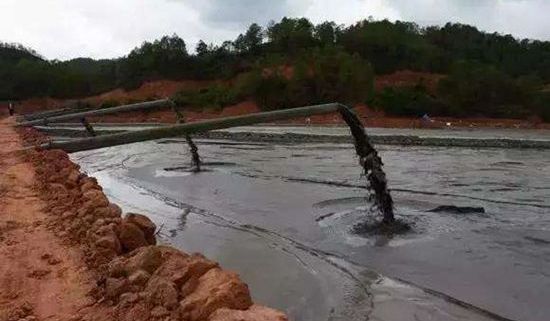Printing and dyeing industrial wastewater
The printing and dyeing industry uses a large amount of water. Generally, it consumes 100 to 200 tons of water per 1 t of textiles for printing and dyeing, of which 80% to 90% is discharged by printing and dyeing wastewater. Commonly used treatment methods are recycling and harmless treatment.
Recycle and re-use:
The wastewater can be recycled separately according to the characteristics of water quality, such as the separation of bleaching and smelting wastewater and dyeing printing wastewater. The former can be used for convection washing and multi-use, reducing emissions;
The recovery and utilization of lye is usually carried out by evaporation method. If the amount of lye is large, it can be recovered by three-effect evaporation. The amount of lye is small, and it can be recovered by evaporation of the film;
Dye recovery, such as Shilin dye can be acidified into cryptic acid, as colloidal particles. Suspended in the residual liquid, filtered by precipitation and recycled.
Harmless treatment:
The physical treatment methods include a precipitation method and an adsorption method. The precipitation method mainly removes suspended matter in the wastewater; the adsorption method mainly removes dissolved pollutants and discoloration in the wastewater.
The chemical treatment methods include a neutralization method, a coagulation method, and an oxidation method. The neutralization method is to adjust the pH in the wastewater, and also to reduce the color of the wastewater; the coagulation method is to remove the disperse dyes and colloidal substances in the wastewater; the oxidation method is to oxidize the reducing substances in the wastewater to precipitate the sulfur dyes and the vat dyes.
Biological treatment methods include activated sludge, biological turntables, biological drums, and biological contact oxidation methods. In order to improve the quality of the effluent water, to meet emission standards or recycling requirements, it is often necessary to use several methods for joint treatment.
Paper industry wastewater
The papermaking wastewater mainly comes from the two production processes of pulping and papermaking in the paper industry. Pulping is to separate the fibers in the plant material, make a slurry, and then bleach; papermaking is to dilute, shape, press, and dry the slurry to make paper. Both processes discharge large amounts of wastewater.
The wastewater produced by pulping is the most polluted. The waste water discharged during washing is dark brown, called black water. The concentration of pollutants in black water is very high. The BOD is as high as 5~40g/L, which contains a lot of fiber, inorganic salt and pigment. The wastewater discharged from the bleaching process also contains a large amount of acid and alkali substances. The waste water discharged from the paper machine, called white water, contains a large amount of fibers and fillers and rubbers added during the production process.
The treatment of paper industry wastewater should focus on increasing the recycling rate, reducing water consumption and wastewater discharge, and actively exploring various reliable, economical and adequate treatment methods for utilizing useful resources in wastewater. For example, the flotation method can recover fibrous solid materials in white water, the recovery rate can reach 95%, and the clarified water can be reused; the combustion method can recover sodium hydroxide, sodium sulfide, sodium sulfate and other sodium salts combined with organic substances in black water.
The neutralization method adjusts the pH value of the wastewater; the coagulation sedimentation or flotation method can remove the suspended solids in the wastewater; the chemical precipitation method can decolorize; the biological treatment method can remove the BOD, and is effective for the kraft paper wastewater; the wet oxidation treatment of the sulfite pulp wastewater success. In addition, reverse osmosis, ultrafiltration, electrodialysis and other treatment methods are also used at home and abroad.
Dye production wastewater
Dye production wastewater contains acids, bases, salts, halogens, hydrocarbons, amines, nitros and dyes and their intermediates, and some also contain pyridine, cyanide, phenol, benzidine and heavy metals such as mercury, cadmium, chromium and so on. These wastewaters are complex, toxic and difficult to handle. Therefore, the treatment of dye production wastewater should be based on the characteristics of the wastewater and its discharge requirements, and appropriate treatment methods should be selected.
For example, the removal of solid impurities and inorganic substances, coagulation method and filtration method can be used; the removal of organic matter and toxic substances mainly adopts chemical oxidation method, biological method and reverse osmosis method; decolorization can generally adopt a process composed of coagulation method and adsorption method. In the process, the heavy metal can be removed by ion exchange or the like.



